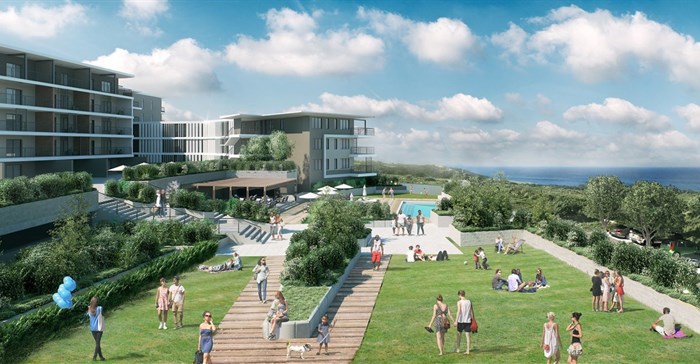
Subscribe & Follow
#AfricaMonth
In the news
Is buy-to-let property still attractive as an asset class in the current environment?

“In uncertain economic and political times, people are still eager to invest in their future but are wary about how they part with their money. So what options are available and how do dynamics such as price, area and property type affect the return on residential property?
“Over the last year (2017), while average annual house price growth nationally has cooled down to 4.2% (Pam Golding Properties Index), properties along our KZN North Coast corridor have experienced growth between 6% and 8%, with some pockets considerably outperforming these pockets.”
Traditional benefits still apply
Bailey says the traditional benefits of property investment still apply, as a brick and mortar investment is less ethereal than some of the financial market investments. While property values still ride on sentiment, the swings in house price values are far less volatile than, for example, the share market. Even when the global housing market crashed at the end of 2008, growth in local property prices slowed down but actual property values, on the whole, did not reduce much.
“Importantly, property is one of the few asset classes where banks are prepared to lend money to investors and allow them to enjoy all the benefits of capital growth. This leverage is one of the most exciting reasons to invest in property as it turbo boosts the return on the actual cash invested by the buyer.
“Property investors enjoy two types of return - house price growth or capital appreciation, and the income return or yield resulting from the rental paid by a tenant. Often, these two have an inverse relationship where investors can choose properties that provide strong capital growth or income return but not both.
“The trick for investors is to find those sweet spot properties where capital growth is strong and the rental income is sufficiently strong to achieve cashflow neutrality with the lowest possible deposit.
“With all the property development taking place along our North Coast property corridor, what factors should we be considering when comparing opportunities?”
Position, property type and price
Bailey explains that the three crucial factors to consider are: position, property type and price.
“The old adage 'location, location, location' still applies. Properties along our North Coast property corridor with sea views experience the greatest growth due to scarcity of supply. Buying in a new precinct like Sibaya just outside the boundary of the more mature uMhlanga suburb will provide a further boost as these markets begin to transition from brand new to more established.
“Interestingly, not all property types are created equal. Properties within estates and sectional title schemes are significantly outperforming capital price growth of freestanding properties – even seaside homes in prime areas. The primary driver of this difference is security, but other lifestyle factors like access to quality shared facilities also play a role.”
Bailey says the last factor to consider when considering property investment alternatives is price. The top end of the property market has slowed somewhat while the mid-range and more affordable properties are experiencing higher demand and hence price growth. Given this trend, and the fact that income yields are generally stronger in lower-priced properties than higher-priced properties, it would be better to invest in more, smaller properties than fewer big ones.
For example, a one-bedroom apartment in the recently launched Sibaya precinct priced from R1.6m is expected to earn a rental of about R10,000 per month unfurnished with a 5.3% yield upon completion while a typical three-bedroom home in uMhlanga selling for about R4m would earn a rental of about R20,000 with a 4.8% yield.
Strong capital growth in sectional title schemes
Concludes Bailey: “Given that capital growth is also stronger in sectional title schemes than single-residential properties, an investor would be better off buying two or more apartments than the home in the above example. The total return would be approximately 5.3% yield + 9% capital growth = 14.3% for the seaside apartments and 4.8% yield plus 6% capital growth = 10.8% for the house respectively in the first year. Assuming a 30% cash deposit, the return on cash invested would be 48% and 36% respectively. This compares very favourably to the returns on offer by other asset classes.
“Property investors along this part of the KZN North Coast are spoilt for choice with all the development underway and planned for the stretch of coastline spanning uMhlanga to Sibaya and beyond over the next few years. While some may be cautious to invest in more property at this time, those who buy well-positioned sea view properties early in a suburb’s life cycle, within estates or sectional title complexes in the low/mid-range price bracket – spanning from R1.5m to R4m – will be making significant progress toward realising their goal of strong asset growth in a very mild economic environment.”











